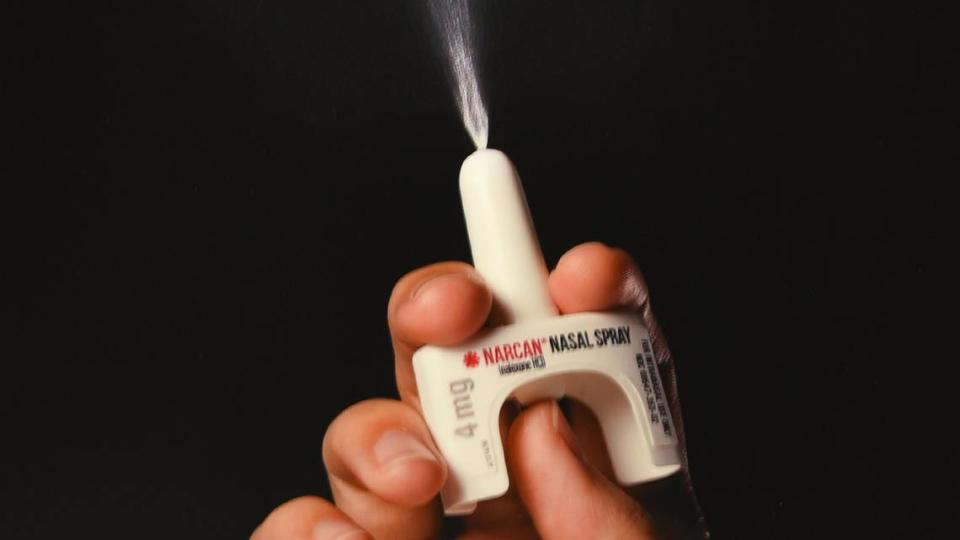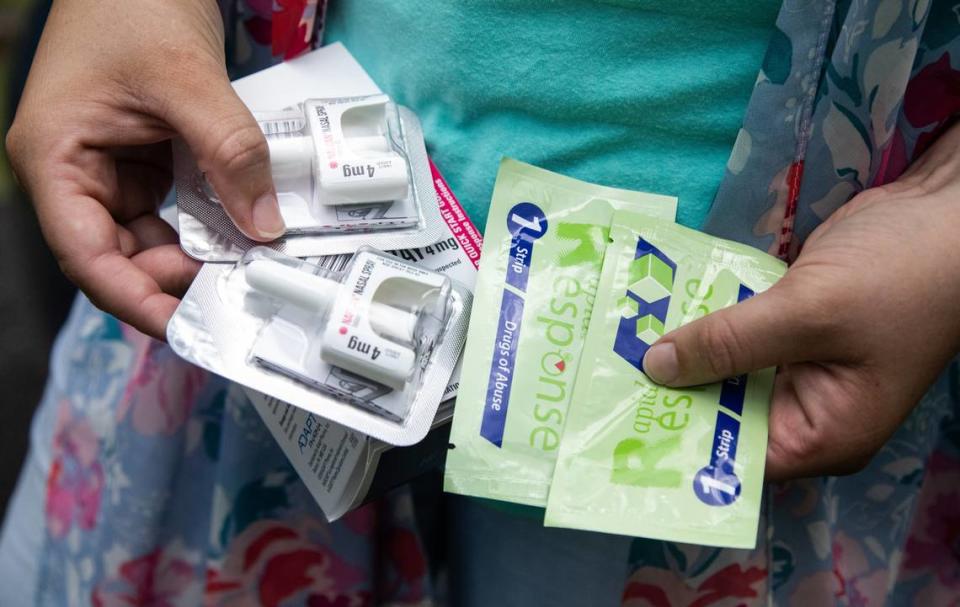Resource officers are now the only ones to carry Narcan in Wake schools. Can this change?
Three years ago, Sophia Walsh was returning home after a fun weekend with friends river rafting in Boone.
On the drive back, she stopped at an acquaintance’s house to use the bathroom and get something to drink. An innocent act that had deadly consequences.
The water bottle she found in the refrigerator was poisoned with a dissolved fentanyl pill, according to investigators. An autopsy report found Walsh had 8.4 nanograms of fentanyl in her system, enough to kill four people.
Walsh overdosed on the drug. She was 24 years old.
Her family and friends remember the Apex High School and Appalachian State graduate as a passionate foodie, chef and nature lover, often photographing animals, plants and flowers.
“This individual did not have naloxone in their home and did not call 911,” said her mother, Barbara, in an interview. “It was not Sophia’s choice to die, and it was not her choice to ingest fentanyl.”
Since her daughter’s death, Barbara Walsh, has been raising awareness about fentanyl emergencies and working to increase the availability of the nasal spray drug naloxone, or Narcan, which reverses a drug overdose in two minutes. Her organization, Fentanyl Victims of North Carolina, highlights the many young people and their families affected by losses like her own.
In the Triangle, there has been a push to make Narcan available in schools, government buildings, police stations and pharmacies. In 2017, school resource officers in middle and high schools in Wake County were supplied with Narcan for emergency use.
Some leaders and advocates say the limited access to life-saving medication in schools should be expanded. Beyond school resource officers, advocates say, teachers, staff, school nurses and even students should have access to and be trained to administer the drug in case of an emergency.
“What is happening today is different than what happened 10 years ago, 20 years ago, 30 years ago. It’s different than when I grew up,” Walsh said. “We were able to experiment and live. Today, that’s not always the case. The stigma some people have about (drugs) is from another era.”
In Wake County, 1,499 people died from drug emergencies from 2013 to 2023, according to the N.C. State Center for Health Statistics. Of that number, 867 — or 58% of the deaths — involved fentanyl. Statewide, more than 36,000 people died from drug misuse from 2000-22.
The synthetic opioid created in the 1960s is often prescribed for pain, and studies show it is 100 times more powerful than morphine. Many young people encounter fentanyl when experimenting with marijuana, Adderall, heroin, cocaine or other pills like ecstasy or Xanax.
The Drug Enforcement Administration reports about 7 out of 10 unprescribed pills contain a lethal dose of fentanyl.
‘It’s a life-saving resource’
Earlier this month, Apex Mayor Jacques Gilbert shared with a state House Select Committee on Substance Abuse this month his efforts to expand the availability of Narcan in local high schools. Gilbert, a former school resource officer at Apex High from 1998 to 2005, said the officers can’t be the only ones to carry the drug in schools in cases of emergencies.
School resource officers get called to situations like breaking up sudden fights and may not always be close to or able to get to other emergencies. There are about 75 school resource officers in Wake County.
Gilbert suggests teachers, school nurses and staff be trained to administer naloxone.
“We see it no different than an EpiPen,” he said in an interview. “If there’s an emergency, teachers can administer that. So, Narcan is no different. It’s a life-saving resource.” EpiPens are used in cases of allergic emergencies.

When he was a school resource officer, drug use, though prevalent among young people, was not as deadly.
In 2019, national opioid deaths for people ages 15 to 24 numbered 4,770, compared to about 1,240 deaths in 1999.
Between 2016 and 2020, drug use among eighth-graders increased by 61%, according to the National Center for Drug Abuse Statistics.
“What continues to be consistent is parent awareness, or lack thereof,” Gilbert said. “I think (for) parents, there are a lot of unknowns and they don’t know how to deal with it. … So, unfortunately, you kind of turn a blind eye to it. No one wants to talk about their child having an addiction.”
Gilbert said because of stigma and fear, young people don’t always get the help they need. In 2021, the Mayor’s Substance Misuse Task Force was created to connect people with counseling and treatment programs for adults and children. The task force educates people about easy access to lethal drugs.
“You can get it from the dark web, you can order (drugs) from another state. Then the packaging of some of these products that you can get from vape shops,” Gilbert said. “How does a young person know, really, what’s in that package? Is it being regulated? All those things are concerning.”
About 800 stores in Wake County sell tobacco products. Many are located less than 400 feet from schools. Last year, Wake County voted to require all new vape and tobacco stores to be 1,000 feet from schools, parks and greenways as a way to discourage kids from getting the products, which are often illegally sold to people under 18.
While there is much support for making Narcan more available in schools, Gilbert said more action is needed from the Wake County School Board and other local leaders.
Next steps
Last week, Charlotte-Mecklenburg Schools voted to expand access to Narcan in all public schools. The move was the first time the school board openly acknowledged the use of drug use among teens in the city, according to The Charlotte Observer.
Now, besides school resource officers carrying the drug, Narcan will be in every emergency kit in the front office of each elementary, middle and high school in Mecklenburg County. Anyone will be able to administer the drug in an emergency.
Since allowing school resource officers to carry naloxone seven years ago, the Wake County School Board has not taken more action to address drug use among teenagers.
In an email, a Wake County Public School System spokesperson said, “while we continue to monitor data and explore options, no decision has been made regarding making Narcan available in all schools.”

On Oct. 30, President Biden and the US Secretary of Education sent a letter to educators nationwide saying all schools should carry naloxone and that faculty and students should be prepared to use the nasal spray to stop an overdose.
“We want to share resources that could help your school and community prevent drug use before it begins and keep students alive long enough to get the help they need in the event of an overdose or poisoning,” the letter read.
The state Department of Public Instruction did not act on the call immediately, which propelled Walsh to speak to the Wake County School Board, sharing the story about her daughter and urging them to expand Narcan in schools.
“I did my presentation (to the school board), and then they went into the closed session, so I never got the dialogue afterward, and nobody called me back,” she said. “Nothing since then.”
Walsh wants to know what they are waiting for.
“Are they waiting for someone to die?” she said.

